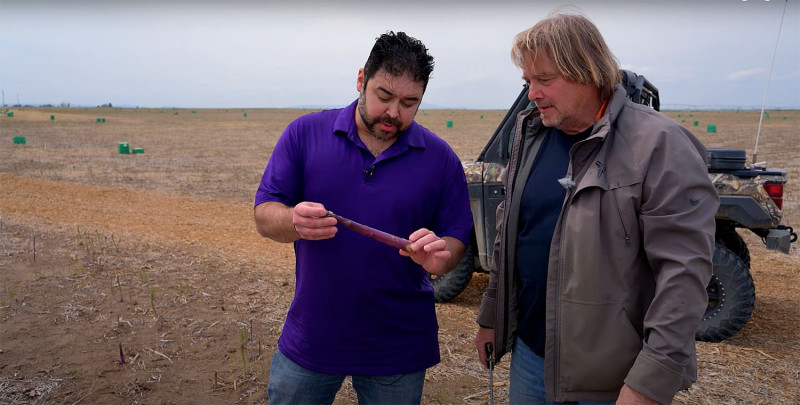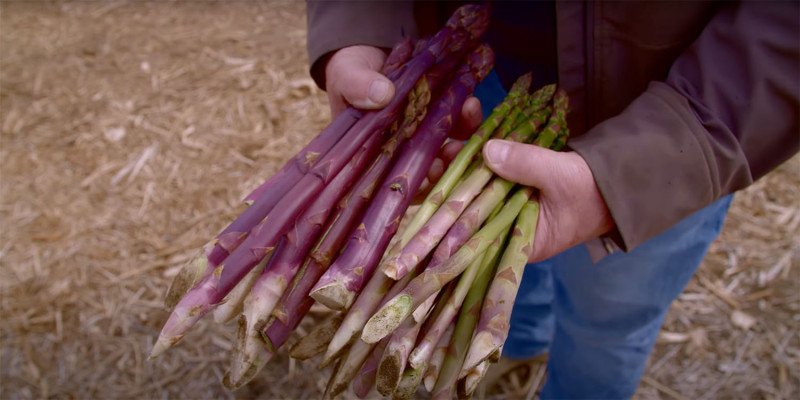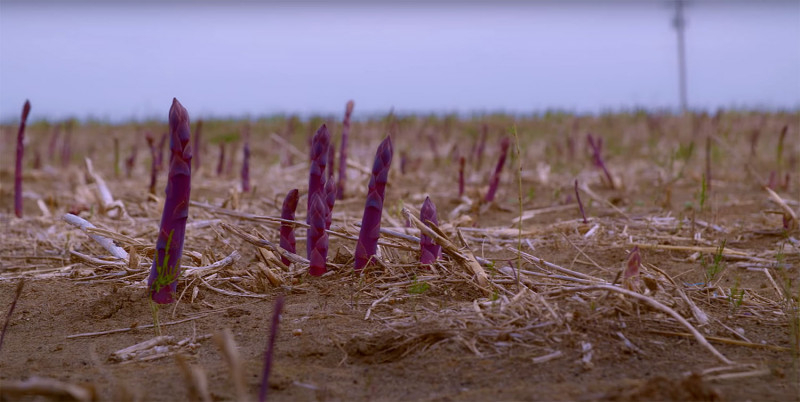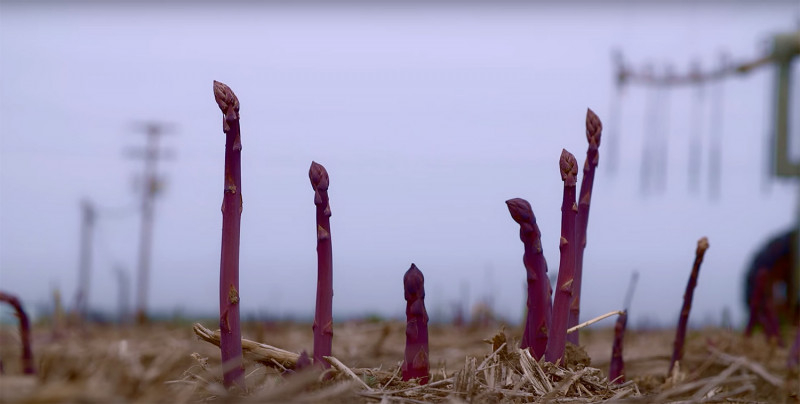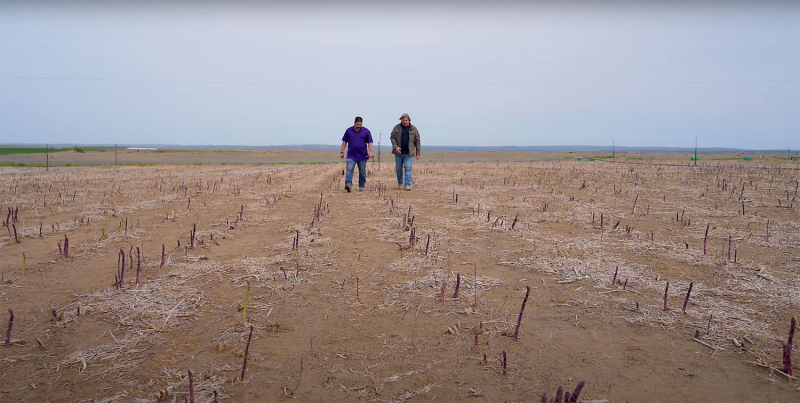The Power of Purple
Gary Larsen wanted to honor the legacy of his parents. In the process, he discovered a surprising way to help others.

The Columbia Basin is a diverse landscape of many different crops that can be grown in its mineral-rich soils watered by the Columbia River. One of our summer favorites is asparagus. These tender, green spears pop up out of the ground haphazardly across what seems to be a fallow landscape. However, when you look closer, you can see hundreds upon hundreds of asparagus plants poking up above the soil. Washington is the largest producer of asparagus in the United States. That asparagus is grown on one of the nearly 60 family asparagus farms in Washington.
We visited one of those families in Pasco to learn more about how they’ve made growing asparagus mean more than simply harvesting a crop. Gary Larsen’s family has been growing asparagus for generations, and over the decades, they have improved their methods and become more efficient. Asparagus acreage in Washington state has decreased dramatically over the years, going from around 32,000 acres when Larsen was a boy to now roughly 4,500 acres. However, farmers like Larsen are producing more asparagus now than ever before.
Larsen has also found a way to honor the legacy of his parents on the farm. Gary’s parents both passed away from Alzheimer’s disease, a disorder in which the brain's cells slowly degenerate over time, resulting in the loss of memory and other important functions. The Alzheimer's Foundation of America works to educate and support anyone affected by Alzheimer’s or dementia and funds research to find better treatments and a cure. Larsen wanted to work to support the Alzheimer's Foundation and its mission. Alzheimer's disease is often represented by a purple ribbon.
There are two varieties of asparagus, the typical green that you usually see, and purple. Purple asparagus makes up only a small percentage of the market, which is why it might be unfamiliar to you. Purple asparagus grows thicker stalks and has a sweeter flavor than the traditional green variety. Larsen saw an opportunity to cultivate purple asparagus to support the Alzheimer’s Foundation.
“I thought, ‘What a great way to raise money.’ It was a way of moving this asparagus for a good cause,” says Larsen. In the first year of the fundraiser, Larsen was able to earn $35,000 from just one acre of purple asparagus. Now, three years later, Larsen continues to produce the prized purple crop and raise money for the cause.
Today, there are 6.7 million Americans living with Alzheimer’s disease. That number is expected to increase to 13 million by 2050. Larsen encourages everyone to check out the Alzheimer’s Foundation of America at their website (alzfdn.org) where you can learn more about it and make a donation. The power of purple is mighty, not only when it comes to feeding Americans, but also in fighting against Alzheimer’s and dementia.

